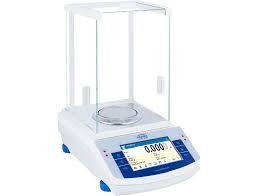Ensuring Accuracy in Analytical Balance Measurements

Ensuring Accuracy in Analytical Balance Measurements
Analytical balances are crucial instruments in scientific laboratories, particularly for tasks that require precise and accurate measurements of mass, such as in chemistry, biology, and pharmacology. Ensuring the accuracy of these measurements is vital to the success of experiments and the reliability of results. To maintain their precision, the analytical balance must be regularly calibrated and carefully operated. Here’s how accuracy is ensured in analytical balance measurements:
1. Calibration of the Analytical Balance
Calibration is the process of verifying the performance of the balance against known standards and adjusting it if necessary. Calibration ensures that the measurements the balance provides are consistent with a recognized standard of mass.
-
Initial Calibration: Every analytical balance comes with factory calibration, but due to environmental factors, wear and tear, and regular usage, these balances may drift over time. To ensure precision, balances are recalibrated periodically.
-
External Calibration Weights: Calibration often involves using certified external weights. These are standard weights of known mass, and they are used to check if the balance is displaying the correct mass. If discrepancies are found, adjustments are made to the balance to bring it in line with these known values.
-
Internal Calibration Mechanisms: Some modern analytical balances are equipped with internal calibration systems that automatically calibrate the instrument at regular intervals, ensuring ongoing accuracy without the need for manual intervention.
2. Environmental Factors
The environment where the balance is used plays a significant role in ensuring accurate measurements. Several factors must be considered:
-
Temperature: Temperature fluctuations can affect the sensitivity and precision of the balance. Most analytical balances function best at a consistent room temperature, typically between 20°C and 25°C. Extreme heat or cold can cause slight variations in the balance readings.
-
Humidity: Humidity can affect both the balance and the substances being weighed, especially those that are hygroscopic (which absorb moisture from the air). Excess moisture in the air can lead to errors in the weight measurement.
-
Air currents and vibrations: Analytical balances are highly sensitive, and even a slight draft or vibration can distort measurements. This is why many balances come with draft shields to prevent airflow from affecting the measurement. Balances are often placed on stable, vibration-free surfaces to minimize interference.
3. Routine Maintenance and Care
Ensuring accuracy also involves maintaining the balance in good working condition:
-
Cleaning: Regular cleaning is essential to ensure that dust, dirt, or residue doesn’t affect the measurements. Balances should be wiped with a soft, lint-free cloth to remove any contaminants from the weighing pan and surrounding areas.
-
Inspection for Mechanical Issues: The moving parts of an analytical balance, including the sensor and the electronic system, should be periodically inspected. Over time, components can wear out or become misaligned, which could affect performance.
4. Proper Usage Techniques
How the balance is used can impact its accuracy. Some key practices include:
-
Zeroing the Balance: Before weighing any sample, it is important to ensure the balance is zeroed, meaning it reads zero when no sample is on the pan. This eliminates the influence of any tare weight or environmental factors on the measurement.
-
Avoid Overloading: Analytical balances have a specified capacity, and overloading the balance can cause erroneous readings and even damage the instrument. The user should always be mindful of the balance’s maximum weight limit.
-
Using Appropriate Weighing Containers: When weighing samples, use containers that are clean and free of any residue that could add additional mass. If a container is used, tare it beforehand to ensure that only the sample’s weight is measured.
5. Verification of Measurement Accuracy
Even after calibration, it’s a good practice to periodically verify that the balance remains accurate.
-
Check with Known Weights: Using standard, certified calibration weights helps confirm that the balance is still reading correctly. If discrepancies occur, it may signal that further calibration or maintenance is needed.
-
Cross-check with Other Instruments: In some cases, comparing the measurements from the analytical balance with those from another well-calibrated scale can help verify accuracy.
6. Documentation and Traceability
For highly regulated environments (such as pharmaceutical and chemical labs), documentation of calibration, maintenance, and measurements is crucial. Traceability ensures that measurements are reliable and adhere to industry standards, providing evidence that the balance was correctly calibrated and maintained.
Conclusion
Ensuring accuracy in analytical balance measurements is a combination of proper calibration, careful environmental control, routine maintenance, and correct usage practices. Regular checks and verifications guarantee that the balance provides reliable results, which is critical for scientific integrity. By following these guidelines, laboratory personnel can maintain the accuracy and precision of their analytical balances over time, leading to trustworthy data in their experiments and studies.
🎓 Discover one of the best Quality Assurance courses available — click below to explore the course that’s shaping future QA skills.

